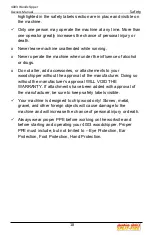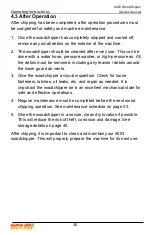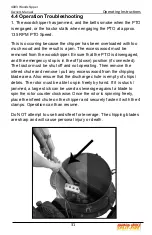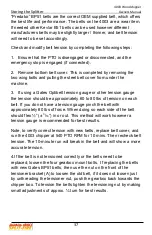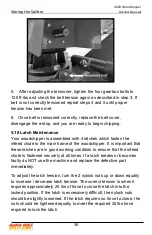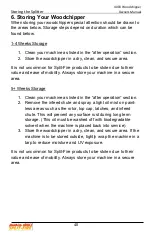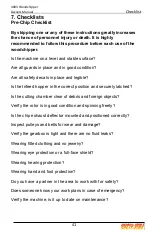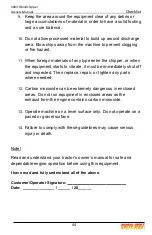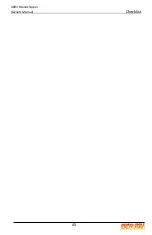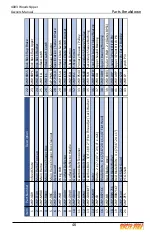
4003 Woodchipper
Storing the Splitter
Owners Manual
32
2. The woodchipper is chipping wood, but it gets jammed quickly and
the RPM’s slow down easily.
This is occurring because the blades on the chipper could be dull.
When the chipping blades are dull, the machine is not as efficient.
The tractor will need to work harder to chip even small material. This
can be fixed by completing blade maintenance. The blades need to
either be flipped to a fresh side or replaced with new blades. See
blade maintenance on page 33.
3. The woodchipper is chipping wood, but the wood does not self-
feed and needs to be pushed into the infeed hopper for any chipping
action to occur.
This is occurring because the blades on the chipper could be dull.
When the chipping blades are dull, the machine is not as efficient,
and the branches / sticks will not self-feed. As the blades begin to
dull, the chipping action will become less efficient and the branches /
sticks will not self-feed. This can be fixed by completing blade
maintenance. The blades need to either be flipped to a fresh side or
replaced with new blades. Once the blades have been replaced, the
chipped will self-feed the branches / sticks with ease. See blade
maintenance on page 33.
6. The woodchipper slows / bogs down when large branches are
being chipped.
This is normal for large branches in the 3.5” – 4” range. If a large
branch is to be chipped. It is important that the operator be ready to
pull back the branch once the chipper RPM’s slow to below 50%
RPM. Once the large branch has been inserted, the chipping blade
will grab the branch to self-feed. Due to the branches size and
strength, the woodchipper will lose rotor inertia and will start to slow
down. As the rotor slows down, the operator must pull the large
branch back
to allow the woodchipper to recover RPM’s. It is
important that the operator NOT attempt to put his/her hands in the
infeed chute to pull back large branches. Once the large branch has
passed the infeed chute rim, the branch must be left alone.

